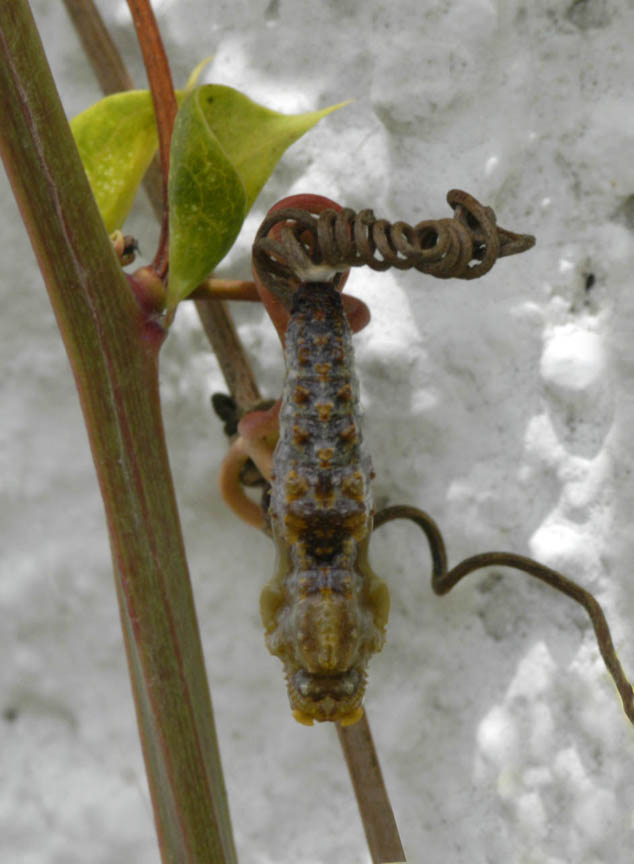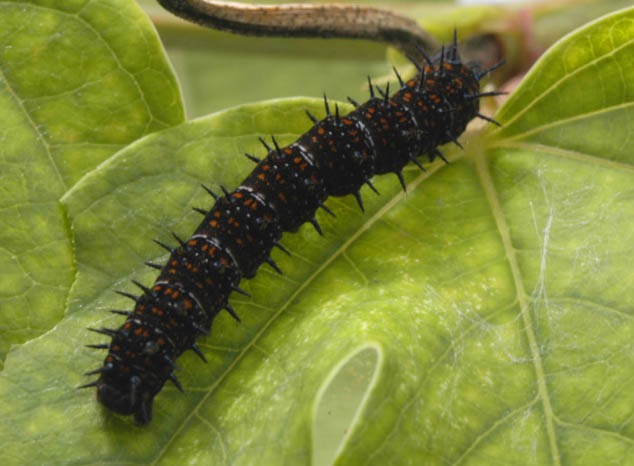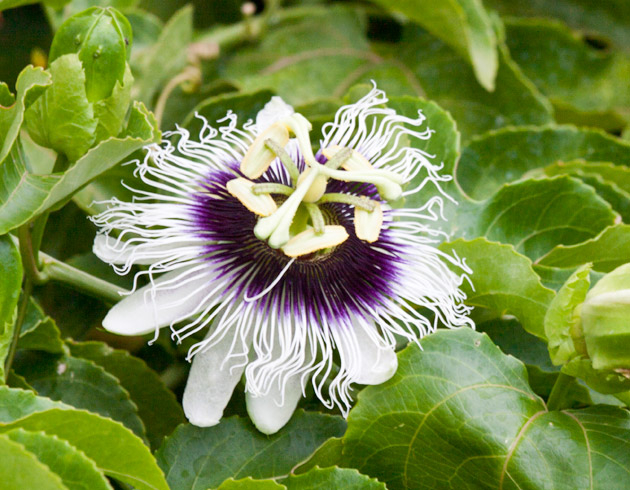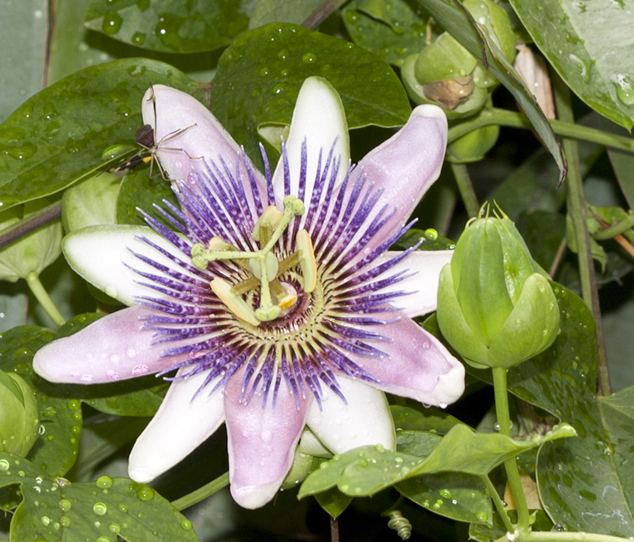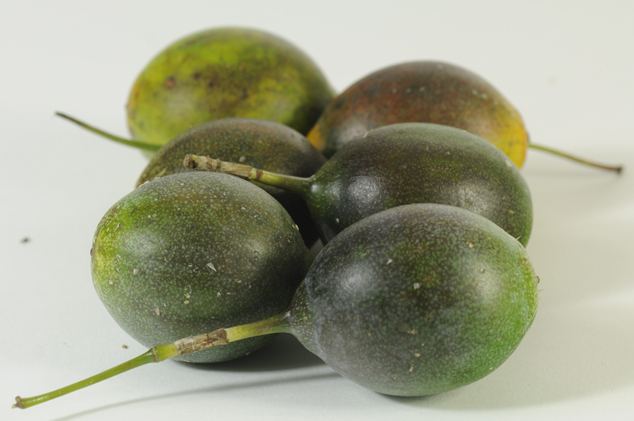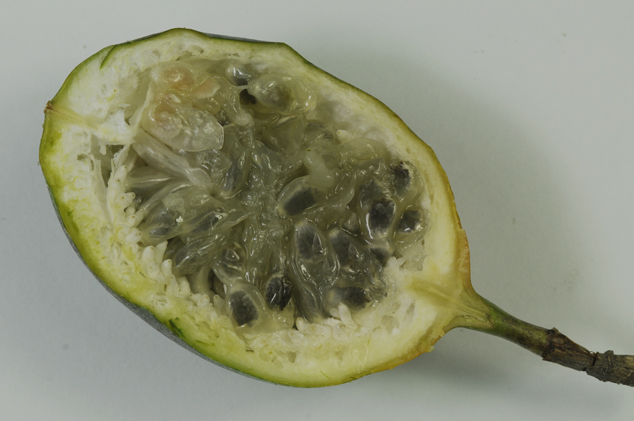Passiflora genus
More than 350 species are known from tropical America, and a few others occur in Asia and Australia. Two species extend into temperate regions of the United States. The plants of this genus are easily recognized by their distinctive flowers, of rather complicated and curious structure.
The early Spanish explorers, as well as some of the scientists of their day, were greatly impressed by a fancied resemblance between the design of the flower and the emblems associated with the Crucifixion; hence the Spanish name "pasionaria" applied to the plants, and the Latin term "Passiflora" given to the genus. Many of the species are notable for their handsome and showy flowers.
The fruits of all species probably are edible. Some of the larger ones have excellent quality and flavor, but the smaller fruits usually are insipid and seldom are eaten.
The ripe fruits are eaten raw. Unripe fruits should not be eaten because they contain cyanide.
Some butterflies use it as a host plant for their larvae.
Larvae from a butterflie using passiflora as host. Photo by Jaime Leonardo, FLAAR office, Guatemala, Guatemala.
Worm in a passiflora leaf, that use as food. Photo by Jaime Leonardo, FLAAR office, Guatemala, Guatemala.
Some common and regional passion fruit species that can be found in Guatemala and in FLAAR garden are:
Passiflora edulis
The Passion fruit or maracuya (P. edulis) is cultivated extensively in the Caribbean and south Florida and South Africa for its fruit, which is used as a source of juice. A small purple fruit which wrinkles easily and a larger shiny yellow to orange fruit are traded under this name.
Passiflora caerulea
Native from Brazil to Argentina; often grown in other regions for ornament or for its fruit; rarely cultivated in Guatemala.
Passiflora caerulea at FLAAR garden, Guatemala City. Photo by Jaime Leonardo.
Passiflora incarnata
Commonly known as Maypop, purple passionflower, true passionflower, wild apricot, and wild passion vine.
Passiflora incarnata, Maypop or purple passionflower at FLAAR office, Guatemala City. Photo by Jaime Leonardo.
Passiflora ligularis
Sweet Granadilla ( P. ligularis) is another widely grown species. In large parts of Africa and Australia it is the plant called "passionfruit": confusingly, in South African English the latter species is more often called "granadilla" (without an adjective).
This species is the granadilla of Central America, being the only species grown commonly there for its edible fruit. The term "granadilla" is derived, of course, from granada, the Spanish term for the pomegranate, that being doubtless the only Mediterranean fruit with which the early explorers could associate this strange new product of the Indies. The fruit of P. ligularis generally is considered superior in flavor to that of such species as P. maliformis and P. laurifolia, which are much grown in some other parts of tropical America. The vines are grown very commonly in the mountains of Guatemala as well as in other countries of Central America, and the fruits are produced in vast quantities and carried long distances for sale in regions where the plants are not cultivated. Granadillas are eaten raw.
They are much liked by most persons because of their agreeable flavor, and they are easy to eat; the tough rind is opened and the pulp and seeds removed with a spoon. The seeds are crisp and crunchy, and often are chewed and eaten with the abundant pulp.
Just where P. ligularis is native in Central America is rather uncertain, for many of the specimens are taken from cultivated plants and collectors seldom note on their labels whether the plants were found wild or in gardens. There can be no doubt, however, that the species is native in the mountains of Guatemala or else it has become widely naturalized in places where it appears native. The juice of
the fruit is often used for flavoring beverages and ices.
Sweet granadilla, Passiflora ligularis edible fruit at FLAAR studio. Photo by Jaime Leonardo, Guatemala City.
Sweet granadilla, Passiflora ligularis edible fruit at FLAAR studio, notice the seeds inside and the shape of it. Photo by Jaime Leonardo, Guatemala City.
Visit our other site on Passiflora.
First posted September 30, 2011.


